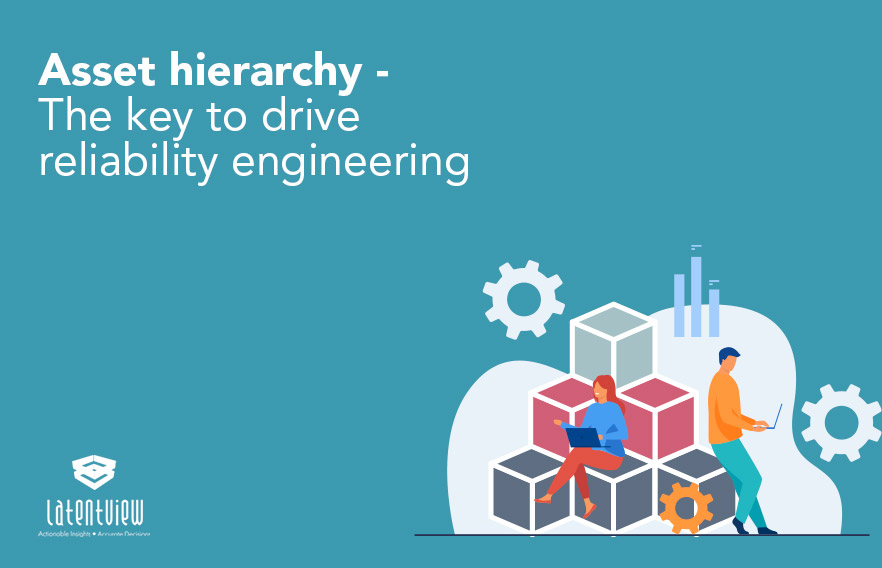A poor maintenance strategy is one of the biggest problems plaguing the oil and gas industry. Unplanned downtime costs manufacturers billions of dollars each year. Reliability engineers strive to arrest unplanned capacity loss by minimizing failures, improving maintenance effectiveness, and shortening repair times of assets. Maintenance managers need to determine how often a machine should be taken offline to be serviced. Reliability engineers and Maintenance managers know leveraging asset hierarchy is the key to a strong predictive maintenance strategy that can cut emergency breakdowns by 75 percent.
What is the asset hierarchy?
An asset hierarchy is a taxonomy of all the sensor tags, machines, equipment, and individual components owned by a manufacturer in one or more locations. The relationship between entities in this top-down structure is like a parent-child relationship

Asset hierarchy is used to track machines, schedule equipment efficiently, and identify the true root cause of failures and prevent expensive breakdowns.
It is important to make use of all the data sources at your disposal to build a strong asset hierarchy that is both current and accurate. Keep in mind that asset hierarchy validation is a process that requires the involvement of subject matter experts (SMEs), Process Engineers, Reliability Engineers, and Application Engineers, to name a few. In general, a chemical plant could have thousands of assets and hundreds of thousands of sensor tags. Building and validating asset hierarchy manually might easily take man-years. These experts and maintenance engineers do not have the time and resources to validate thousands of lines of asset mapping. So, how do we build this asset hierarchy smartly and efficiently?
Steps to build a strong asset hierarchy
There are 3 steps to build a strong asset hierarchy –
- Text-based mix and match algorithms
Text matching algorithms utilize tag naming conventions, pattern matching, and regular expressions to extract useful contextual information that forms the different layers of the asset hierarchy. Maintenance data, distributed control systems, variance monitoring, and process control data can be leveraged to extract sensor tags to equipment mapping. The major challenge in this step is different plants follow different conventions and patterns. There is no one golden standard that applies to all plants. A complex and robust rules engine to handle different cases and exceptions is the way to tackle inconsistencies. The mapping coverage from this step is only as good as the data and the rules engine. Bad data and insufficient rules will lead to lower and inaccurate asset mapping.
- Active Learning
Text matching algorithms will only yield a limited number of high confidence mappings. Active learning can be leveraged to improve accuracy for mappings with low and medium confidence mappings. High confidence mappings are used as the training data for the generative and discriminative model. Labeling functions generate features for the models to score all the data. Uncertainty sampling will pick sample data points for which the model predictions are least certain. SMEs will validate the sample and provide feedback which will be used to finetune the model. This active learning loop will continue until we reach the maximum threshold of incremental improvement

- Image Analytics
Asset mappings can be extracted from Process & Instrumentation Diagrams (P&IDs) using Adaptive Neural Networks. This model is used to detect objects, identify object location through bounding coordinates and centers, identify connections between objects to identify parent-child, siblings, and neighbor relationships, and extract other contextual information. Neural networks are trained to recognize patterns, shapes, and symbols that are used in the diagrams. Position and connections between objects are identified to frame associations between the assets.

Help your business realise the promise of advanced analytics
In summary, energy companies that invest in the creation of an accurate asset hierarchy will be in the best position to optimize the equipment life cycle and maximize overall throughput. Technologies such as machine learning and artificial intelligence enable companies to automate and extract asset hierarchy accurately and promptly which might otherwise take years to build and maintain. LatentView Analytics is working with companies across industries to harness the power of advanced analytics, AI & ML to transform their business processes, drive innovation, and enhance the customer experience. To know how LatentView Analytics can help you plan for AI and leverage its potential within your business, please get in touch with us at marketing@latentview.com





